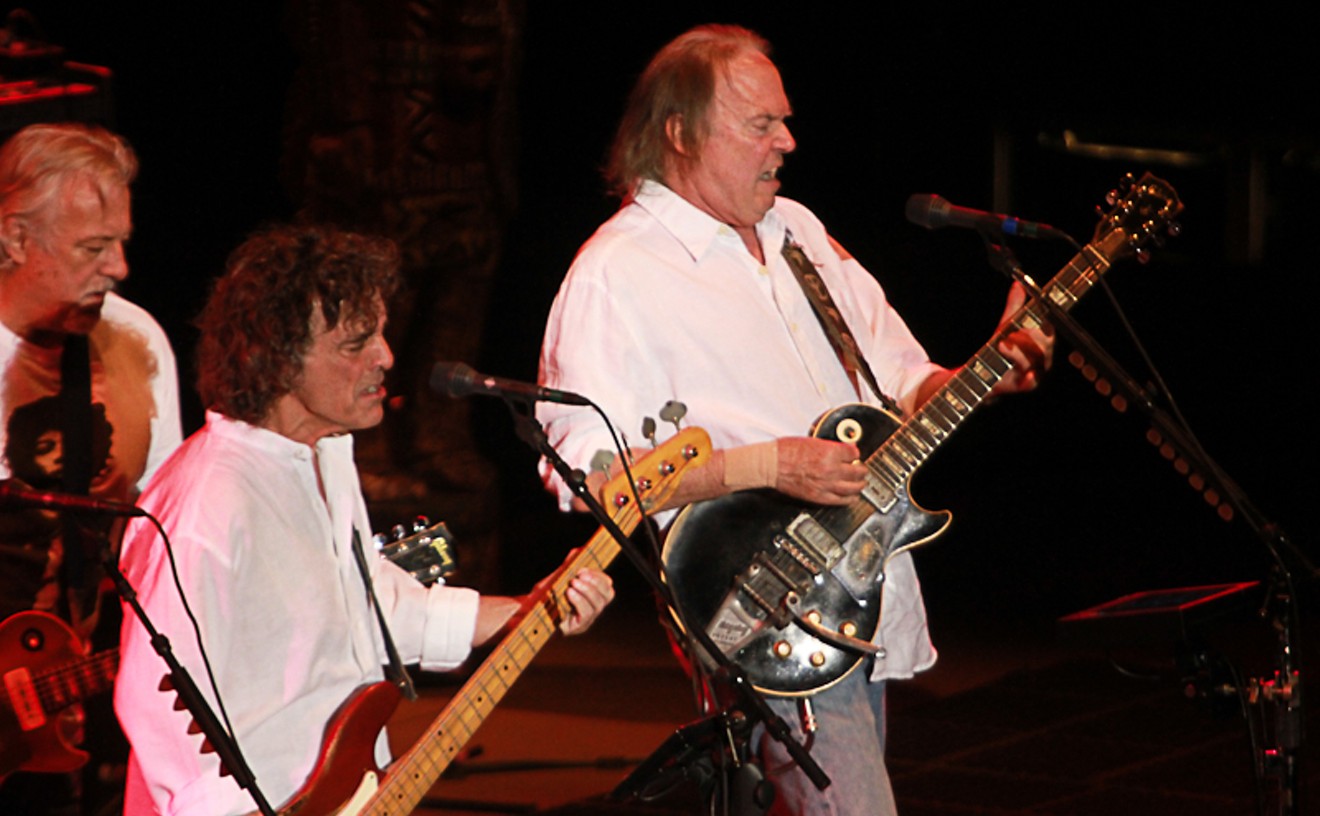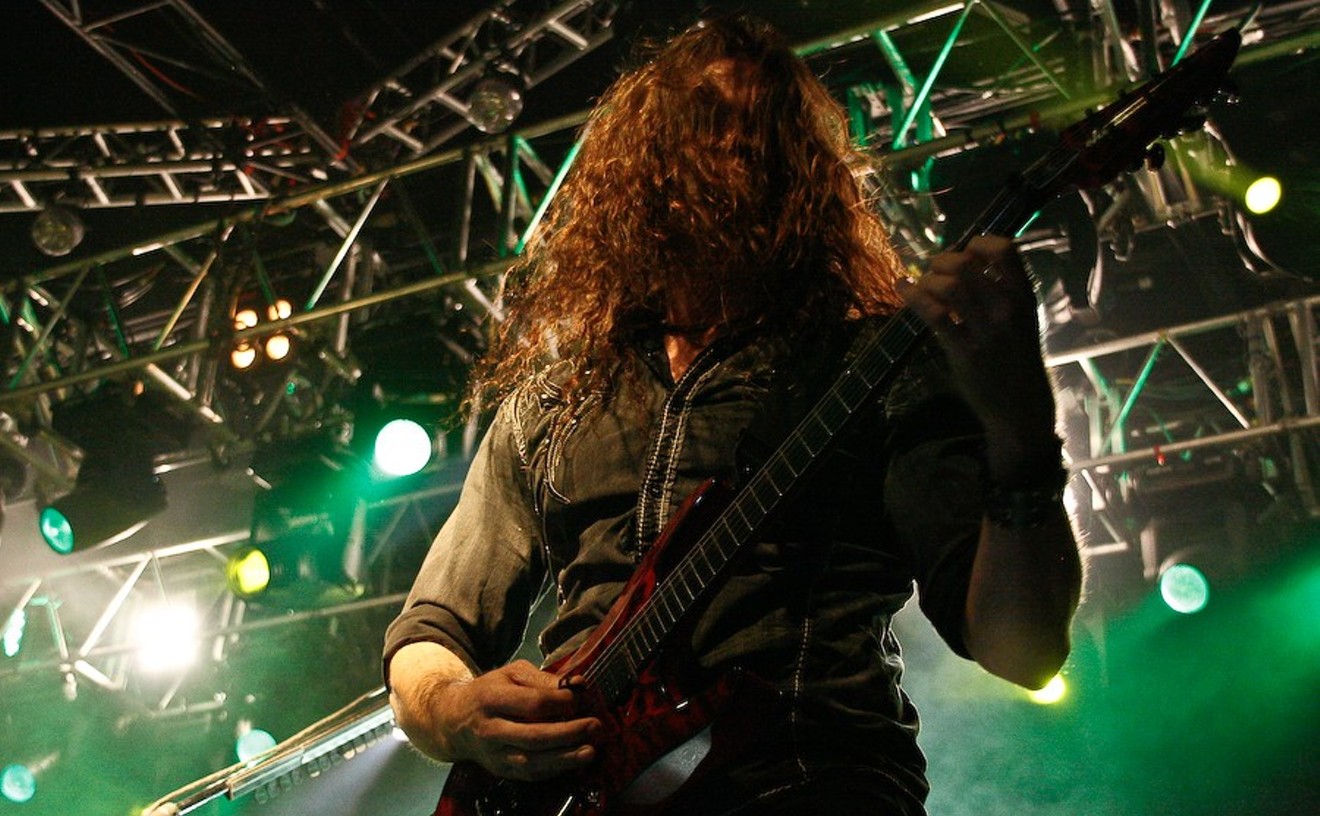It's difficult to imagine, but U2 used to be cool. Not just cool, but one of the most innovative, inspiring and mysterious bands of its generation. The group challenged the sounds, look and emotional resonance of rock music, forever redirecting the cultural stream for good or ill. Today, while many of the songs on The Joshua Tree, released a quarter-century ago tomorrow, might invoke an eye-rolling lack of enthusiasm, much of that is due to the fact that the sound of the album has been imitated so many times that it now seems about as novel as a used paper towel.
Coming on the heals of The Unforgettable Fire -- the compact, ambient sounds of which represented a new direction for the act -- the members of U2 were looking for something more disciplined, something with a vast, cinematic feel. Having toured America for a half-dozen years, they had the imagery of expansive deserts and failed dreams on their minds, and so they used America as the prism through which the songs were filtered. After digesting the beats at a young age, Bono was discovering American authors like Norman Mailer, Flannery O'Connor and Charles Bukowski, becoming fascinated with the ambition and illusions of the world's most powerful country.
The U2 frontman was also spending more time with groups whose sounds were rooted in Southern blues and traditional folk music. After an embarrassing night drinking and attempting to play songs with Mick Jagger and Keith Richards, Bono discovered he knew next to nothing of American roots music -- his sound being more grounded in late-'70s British punk. The young Irishman was further humbled when his new friend Bob Dylan invited him on stage to perform "Blowin' in the Wind" with him, only to discover that Bono was unfamiliar with the song (he improvised whole verses on stage).
Inspired by a newfound obsession with the music of Robert Johnson, Billie Holiday and Pete Seeger, a coupled with an intense loathing of the crippling domestic and foreign policies of the Reagan administration, the working title of the album became "The Two Americas." During a break between recording and touring, Bono took his new wife on a tour through war torn El Salvador and Nicaragua, dodging bullets and cursing America's intervention in a civil war. Later, while recording the damning "Bullet the Blue Sky," Bono would tell the Edge to "put El Salvador through the amp."
Describing musical notes to be very "expensive," the Edge developed his signature minimalist sound through the recording of The Joshua Tree. Coming at a time of the guitar virtuosity of Van Halen and the bombastic machismo of hair-metal, the Edge wanted to move toward more ambient, emotionally complex sounds. Using delays and a dancing arpeggio of notes, he achieved the "expansive, spiritual desert" sound Bono and Brian Eno were looking for. This reaches its zenith on the album opener, "Where the Streets Have No Name," a song about the veiled caste system of Belfast, where a person's income and religion can be traced to which street they live on.
Seeing America essentially as a place of contradiction, Bono injects his own personal experience into the paradoxes on songs like "I Still Haven't Found What I'm Looking For", "With or Without You" and "Running to Stand Still". Bono loved America, but after becoming one of the nation's most popular bands, he began to see what he described as "two Americas: the mythic America and the real America."
For the cover of the album, photographer Anton Corbijn spent two days in the Mojave Desert, searching for locations to match the sound of "the spiritual desert" that the group worked so hard to achieve (another working title for the album was "The Desert Sessions"). After raving about the look of the joshua trees scattered throughout Mojave, Bono was enthused about the religious resonance of the name, coming from Mormon settlers who saw the upstretched limbs of the plant reminding them of the Old testament prophet Joshua.The following day, Bono would declare that the album would be called "The Joshua Tree." The band would be photographed in the Mojave Desert, and the shot was packaged on the LP sleeve as a panoramic shot with them isolated on one side with the expansive desert surrounding them, giving the men a lonely, unsettled feeling, evoking the struggle of a spiritual journey (criminally, the CD cropped the image to only feature the band).
The Joshua Tree went on to sell 25 million copies, one of the best selling records of all time. A historic $100,000 was dropped by Island Records on promotion, and for the first time an album was triply released on CD, vinyl and cassette all at once. "With or Without You" and "I Still Haven't Found What I'm Looking for" would be the band's first -- and last -- number one singles. The album landed the band on the cover of Time and garnered countless critical praise.
U2 continued on with the American cowboy aesthetic for their following project, a film and live album featuring big American collaborations with B.B. King, Bob Dylan and a cover of The Beatles "Helter Skelter," -- Bono brazenly saying "this is a song Charles Manson stole from The Beatles, we're stealing it back." At a cost of over a million dollars, Rattle & Hum has gone down in history as a bloated blunder, critics taking them to task for going to far with the whole We Are American Irishmen concept.
After a New Years Eve concert in Australia in 1989, Bono told the crowd, "We have to go away for a while and dream it all up again." U2 would never again try and become the socio-historic mouthpiece for America, going a much more post-modern, Euro-pop direction, preferring cynicism and irony over bleeding heart social commentary. Just as the outfit contrasted the sparkly hair-metal of the late 1980s with emotionally rich, pastoral music landscapes, U2 would actively distance themselves from the straightforward, anti-pop "realness" of early '90s grunge with slick, dance-y production, a glitzy, Televangelist in Vegas on a popper-binge hilarity.
Though if you can overlook the deflated, forgettable acts the album inspired (Creed) The Joshua Tree remains one of the most creatively successful albums of rock history, a tightrope act of virtuosity and restraint, of believing "in the kingdom come" while still "holding hands with the devil." If you have the sociological muscles to turn off your cynicism and pretend you haven't heard the songs on classic rock radio a billion times since you were ten, The Joshua Tree album is a sonic experience to be treasured.
Follow Backbeat on Twitter: @westword_music










